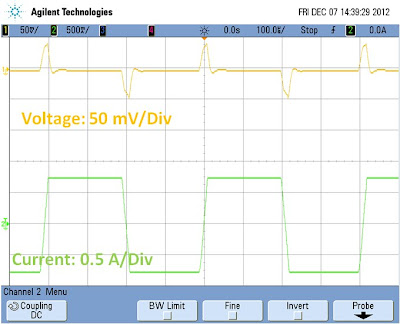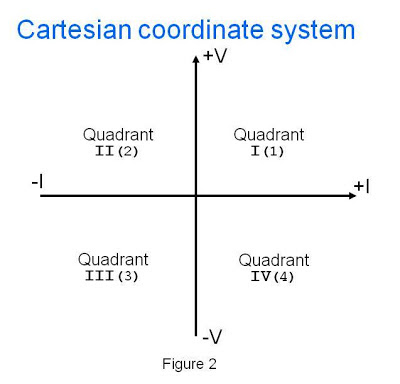One test commonly done during design validation of
handheld battery powered devices is to evaluate their ability to withstand a
short loss of battery power due to being bumped and the contacts momentarily
bouncing open, and either remain operating or have sufficient time to handle a shutdown
gracefully. The duration of a contact bounce can typically range anywhere from
under a millisecond to up to 100 milliseconds long.
To simulate battery contact bouncing one may consider
programming a voltage drop out on a reasonably fast power supply with arbitrary
waveform capabilities, like several of the N675xA, N676xA, or N678xA series
modules used in the N6700 series Modular DC Power System or N6705B DC Power
Analyzer mainframe, shown in Figure 1. It is a simple matter to program a
voltage dropout of specified duration. As an example a voltage dropout was
programmed in Figure 2 on an N6781A SMU module using the companion 14585A
software.
Figure 2: Programming a voltage drop out using the N6705B
and N6781A SMU module
While a voltage dropout is fine for many applications,
like automotive, in many situations it does not work well for simulating
battery contact bounce. The reason for this is there is one key difference to
note about a voltage dropout versus a battery contact bounce. During a voltage
dropout the source impedance remains low. During a battery contact bounce the
source impedance is an open circuit. However, a DC source having the ability to
generate a fast voltage dropout is a result of it being able to pull its output
voltage down quickly. This is due to its ability to sink current as well as
source current. The problem with this is, for many battery powered devices,
this effectively short-circuits the battery input terminals, more than likely
causing the device to instantly shut down by discharging any carry-over storage
and/or disrupting the battery power management system. As one example consider
a mobile device having 50 microfarads of input capacitance and draws 4
milliamps of standby current. This capacitance would provide more than adequate
carryover for a 20 millisecond battery contact bounce. However, if a voltage
dropout is used to simulate battery contact bounce, it immediately discharges
the mobile device’s input capacitance and pulls the battery input voltage down
to zero, as shown by the red voltage trace in Figure 3. The yellow trace is the
corresponding current drain. Note the large peaks of current drawn that
discharge and recharge the DUT’s input capacitor.
One effective solution for preventing the DC source from
shorting out the battery input is to add a DC blocking diode in series with the
battery input, so that current cannot flow back out, creating high impedance
during the dropout. This is illustrated in Figure 4.
Figure 4: Blocking diode added between SMU and DUT
One thing to note here is the diode’s forward voltage
drop needs to be compensated for. Usually the best way to do this just program
the DC source with the additional voltage needed to offset the diode’s voltage
drop. The result of this is shown in Figure 5. As shown by the red trace the
voltage holds up relatively well during the contact bounce period. Because the
N6781A SMU has an auxiliary voltage measurement input it is able to directly
measure the voltage at the DUT, on the other side of the blocking diode,
instead of the output voltage of the N6781A. As seen by the yellow current
trace there is no longer a large peak of current discharging the capacitor due
to the action of the blocking diode.
Now you should have a much better appreciation of the
differences between creating a voltage dropout and simulating battery contact
bounce! And as can be seen a blocking diode is a rather effective means of
simulating battery contact bounce using a voltage dropout. Stay tuned for my
second part on additional ways of simulating battery contact bounce on an
upcoming posting.
.





















